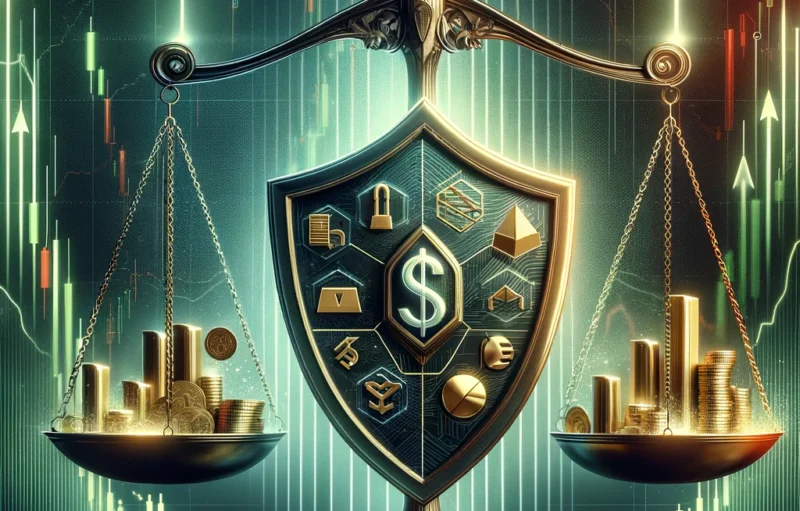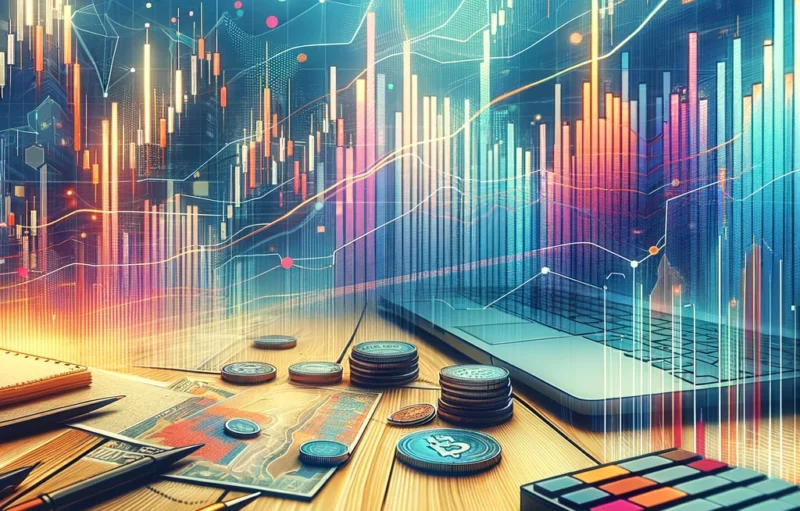
You can have a big formation as trader, you can have the best technology and have the best intentions. Also you need to consider as vitally important to know and have a good risk management in trading. People talk more about profit and utility and this is the same important or even more important than these.
Risk management on trading
Risk management on trading, in essence, the process of identifying and assessing the potential risks involved in an action, as well as creating a risk plan. Evaluation of the potential risks involved in an action. As well as the creation of a plan to mitigate them and to reduce to mitigate them and to reduce potential losses.
In the investment world, for example, it’s the process of measuring and quantifying the likelihood of adverse effects on an investment, of probabilities of adverse market effects in financial investments. The
risk management in this case focuses on measuring the possible risks involved in a given financial investment. financial investment. In the same way, and as we said, it also involves establishing contingency and hedging plans in case these risks become a reality.
RISK MANAGEMENT COMES FROM THE BUSINESS WORLD

In the business world. It also refers to these same processes of measuring and quantifying the probabilities of occurrence of various risks. As well as to the and quantification of the probability of the occurrence of various risks, as well as the losses they could cause us. Only in this the losses that these could cause us. Only in this case, we are talking about losses recorded by the company and not by a given investor. the losses recorded by the company and not by a specific investor.
In other words, the company considers the present risks (new competitors entering the market, its product becoming obsolete, etc.). Considers the probability of their product becomes obsolete, etc.), contemplates the probability of its occurrence, and at the same time measures the possible losses that this risk, if it materializes, would cause to the company. The company measures the possible losses that this risk, if it were to materialize, would cause to the company.
In the same way, it should be remembered that the company, in this risk management process, must draw up a contingency plan for the risk that may occur must draw up a contingency plan so that if a risk materializes, it will be able to respond quickly and minimize the risk to respond quickly and minimize, as far as possible, the potential loss.
Can be interesting for you: What do is it mean to be success on trading?
In this regard, the steps to follow are as follows:
- Identify risks.
- Analyze all risks, separately and jointly.
- Evaluate risks, probability of occurrence, as well as potential losses.
- Evaluate contingency plans, separately and jointly, as well as alternative plans in case they fail.
- Reduce risks, with the implementation of those plans, as well as the implementation of those strategies, investments, or other actions that lead to a reduction of the potential potential damage.
- Monitoring risks. Seeing if our contingency plans are working, as well as monitoring the probability of and monitoring the likelihood of occurrence and potential damage at all times. Potential.
Financial risk management
In the financial field, risk management is taken as one of the main fields of action. Fields of action. It actually measures the volatility of an investment or asset and, in turn, offers proposals for and, in turn, makes proposals for containment in the event of a crisis.
This volatility, which must be taken into account in any investment valuation, must be countered by diversification of investments. Be countered by diversification of investments. This is done in such a way as to reduce risk and compensate for possible losses. risk is reduced and possible losses are compensated.
Risk quantification is performed through techniques and studies based on experience (empiricism). experience (empiricism). That is, with endogenous variables of the asset, and with exogenous or market or environmental variables. Exogenous or market or environment variables.
Types of financial risks
There are certain risks depending on their origin, and always in relation to the fluctuations of the financial markets:
- Interest rate risk: Due to movements in national or world interest rates.
- Market risk: Specifically, originated by the volatility of securities and other assets in the financial markets.
- Currency or foreign exchange risk: These are the risks arising from changes in the foreign exchange markets.
- Credit risk: It arises from the possibility that one of the parties to the contract does not assume its obligations.
- Liquidity risk: The consequence of one of the parties involved not assuming its obligations or payments. This is due to the inability to convert its less liquid assets into available cash or money.
- Operational: Possibility of financial losses originating in the environment, be they procedures, processes, global market trends, obsolescence or other.
- Country risk: It’s determined by a country’s legal security and macroeconomic situation.
- Systemic risk or minimal risk: It is the risk common to a sector or financial investment.
RISK MANAGEMENT SYNTHETIC INDEXES
Starting from the fact that the synthetic indexes are a simulated market (algorithmic) unique to the DERIV or BINARY broker (they are the same owners). This is a good market to achieve capitalization, as long as risk MANAGEMENT is handled correctly.
The key to risk management in trading and specifically in synthetic indices is in logging.
The lotajes, when we talk about lotajes we become familiar with a very well known term in the Forex market, this refers to the value or volume of our investment in each operation performed. In this article we will talk about how much is a lot for each small candle on our BOOM 1000 chart. There are 4 main indexes of this type, but we will be focused mostly on the BOOM 1000 (BOOM 1000, BOOM 500, CRASH 1000, CRASH 500).
BOOM indices are characterized by 1-minute candlesticks that make explosive upward candles as in the following image. The CRASH indices are characterized by 1 minute candlesticks that make explosive downward candles as in the following image. Our operations will be based on looking for these large candles on the chart and make the most of them.
In order to manage and calculate our profitability in this market, we must keep in mind the small candlesticks that appear on the chart. With these candlesticks we will measure and calculate our profitability and capital management.
Choose a suitable lot size for your trades according to the size of your account. Don’t over lot and don’t put SL so wide, this could burn your account.
NOTE:
In the Crash 500 the candlestick value averages 0.50 cents more than the others. BOOM 1000 AND BOOM 500 Small candles down and large candlestick bursts up. We Buy Only. You should only trade Buys, trying to predict or take those candles. Never trade Sell (because if a Boom occurs when you were in a Sell trade, that Boom candle can burn your account).
CRASH 1000 AND CRASH 500 Small candles up (pullbacks) and large candlestick bursts down. We only sell.
You should only trade sells, trying to predict or take those candlesticks. Never trade buy (because if a crash occurs when you were in a buy trade, that big candle can burn your account).
The best way to better understand how to do it is to join us in our live broadcasts on the YouTube channel of the CEO and Founder of @neuronaltrader , creator of binarytools.io Jesus Rueda. To go to the channel, subscribe and enable notifications, go to this link: (1) Jesus Rueda – YouTube
Important: The information and/or knowledge expressed in this article shouldn’t be taken as investment recommendations or financial advice. All investments and/or actions involve a risk and each person is responsible for researching, educating and analyzing before making an investment decision.






